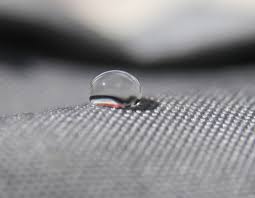What is meant by hydrophobic sorbent?« Back to Questions List
|
Hydrophobic sorbents are used to save environment from the negative impacts of oil spilling. Hydrophobic is a special characteristic of a substance that repels water. This hydrophobic property prevents the substance from absorbing water. They do not have any affinity towards or dissolve in water or solution with water presence. A sorbent is a material that is applied to absorb or adsorb liquids or gases. The special feature of a sorbent is the ability to collect the molecules of another substance and the process is known as sorption. Hydrophobic substances do not dissolve in water. CH2- chains and rings (hydrocarbons) are the major chemical groups that form such substances. Due to the low surface free energy level, hydrophobic substances lack the ability to create hydrogen bond. As a result, water cannot wet the surfaces of hydrophobic substances and the water droplets remain beaded up. They are non-polar and due to this characteristic, hydrophobes attracts other neutral molecules and non-polar solvents. Hydrophobic substances possess properties like corrosion resistance, water proof capability and stability against organic and inorganic pollutants. Researchers have conducted many experiments to change the properties of various surfaces to make them hydrophobic. The concept finds wide use in the manufacture of paints and textiles. By using silanes, the glasses with hydrophobic characteristics are manufactured. Hydrophobic coating on stainless steel makes it a better corrosion resistant. The characteristic opposite to hydrophobic is known as hydrophilic in which the substance exhibits water-loving properties. Sorbents are materials used to absorb other materials due to their high affinity. A sponge absorbing water, polypropylene fiber mat and cellulose fiber absorbing oil are examples. We are familiar with the high absorbing capability of the granular gel material contained in a baby diaper. Sorbents soak up oil from the water by either absorption or adsorption. In absorption process, oil penetrates into the sorbent through pores. In adsorption though sorbent attracts oil to the surface, it does not enter the sorbent. An efficient sorbent attracts the oil and repel water. There are three types of sorbents: natural organic (sawdust, feathers or anything that contain carbon), natural inorganic (clay or sand), or synthetic (polyethylene or nylon). Hydrophobic sorbents are used for managing oil spills and removing oil from water. They are also used for separation of non-polar substances contained in polar compounds. Hydrophobic sorbent exhibits the quality of oil -loving and absorbs oil when it comes in contact with oil. Researchers in the Indian Institute of Science Education and Research (IISER) in Thiruvananthapuram, Kerala, India recently developed an effective hydrophobic sorbent. It was developed by using cheap raw materials mannitol and cellulose pulp. In this simple process, cellulose balls are dipped in mannitol converted to a hydrophobic gelator and dried. It is highly environment friendly. What is crude oil? Olive oil extraction – The complex process in simple termsHow is water retained by the soil? |

